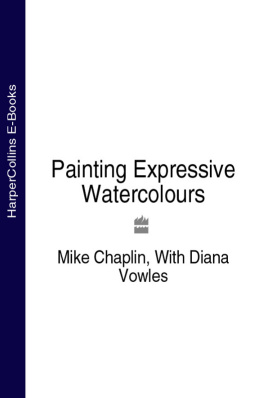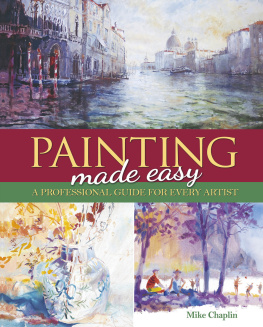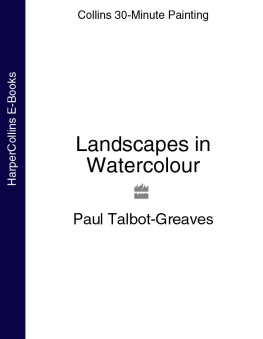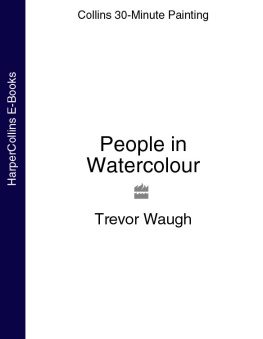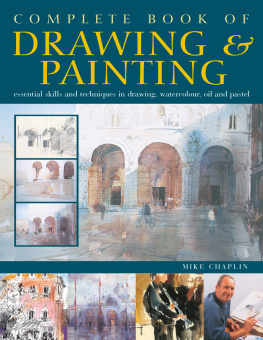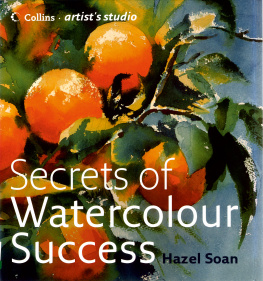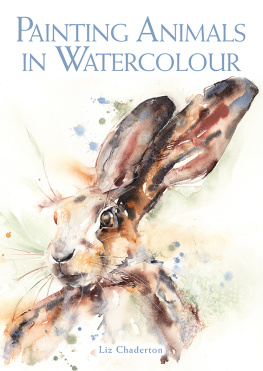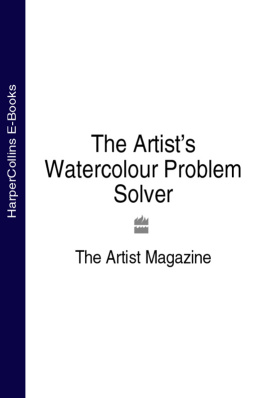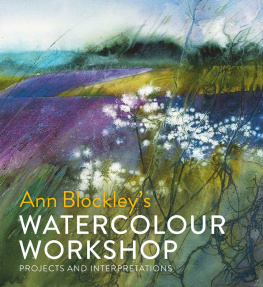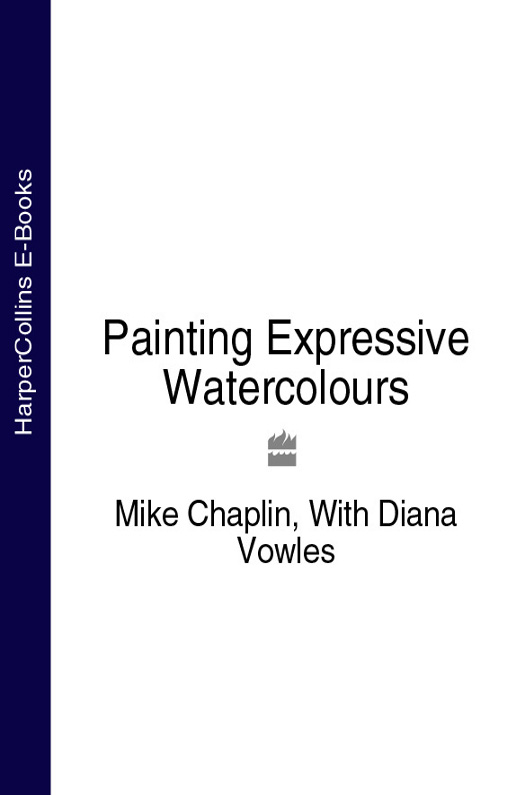
CONTENTS

Watercolour is a medium that is capable of expression ranging from the most finely detailed of botanical studies to the most loosely gestural of marks. As a pigment it is easy to take out into the countryside and as a painting it is comfortable in a domestic environment and very portable for travelling exhibits. Such accessibility has gained it a unique standing with both professional and amateur artists.

ITALIAN ALPS
45.5 66cm (18 26in)
This picture was painted in the studio from a small study I did on a coach on the way through Italy. I awoke at 6 am, with cold England several hours behind me, and drew a five-minute sketch to catch the memory of the warmth of the stones and the mountainous landscape.
A brief history
In its simplest form, watercolour was used in Europe more than 10,000 years ago when cave-dwellers of the Upper Palaeolithic era mixed red earth with water and used it to paint pictures of hunters and their prey on the cave walls. Yet in the Christian era in Britain, it was not appreciated as an art medium in its own right until the 19th century, when Queen Victoria gave the royal seal of approval that brought it firmly into the purview of the art establishment.
It may have been watercolours simplicity that made it seem inferior to the business of sculpting and painting in oils. A provincial artist of the 15th century would have had to make do with what could be obtained in his village, and a simple starch glue combined with pigment was easier to achieve than the more complex binder and oils required for oil painting. Pigment itself was scarce, and the artist would often accept it as his fee.
By the 18th century, watercolour was well established as a means of making a topographical view of the landscape. While families making the Grand Tour of Europe took along their art tutor, in effect to provide the holiday photographs, professional artists such as Alexander Cozens (17171786) and Francis Towne (17401816) travelled extensively in Italy. It became part of the English tradition that one went abroad to do watercolour paintings of exotic ruins except that they were known as watercolour drawings, as the medium was not even dignified by the recognition that it was paint.

CADER IDRIS, NORTH WALES
John Varley (17781842)
24 35cm (91/2 133/4 in)
In this classic landscape the tree acts as a framing device and points the eye towards the figures almost hidden below the bank. Their comparative insignificance was a new development in art.
The impact of war
In 1799 the Napoleonic Wars broke out and Europe was closed to the British traveller. Artists were forced to turn to their native landscape, and the land itself became a subject rather than being a backdrop for portraiture. John Varley (17781842), Thomas Girtin (17751802), John Sell Cotman (17821842) and David Cox (17831859) ushered in the golden age of British watercolour, while. Richard Parkes Bonington (18021828), William Callow (18121908) and, above all, Joseph Mallord William Turner (17751851) drew inspiration from the maritime tradition of the nation. Girtin and Turner in particular explored the capacity of watercolour for creating atmospheric effects, experimenting with texture and colour.
The art establishment continued to reject watercolour nevertheless, and in 1804 a group of watercolourists instigated an annual exhibition in London. No fewer than 11,000 people attended in the first year, and by 1809 visitor numbers had risen to 23,000. These paintings of landscapes that were still largely inaccessible to town-dwellers aroused enormous interest, and in 1881 the Society of Painters in Watercolour was granted a royal charter and subsequently became known as the Royal Watercolour Society. By this time Europe was available again to travellers such as Francis Oliver Finch (18021862) and Edward Lear (18121888), but the British had now taken watercolours of their own land to their hearts.

CLASSICAL LANDSCAPE
Francis Oliver Finch (18021862)
55.5 75.5cm (213/4 293/4 in)
Within this typically British landscape painting with the calmness of a horizontal composition there is a theatrical approach to a romanticized view of classical history.
Into the 20th century
War has been a defining influence on British art, and artists such as Paul Nash (18891946) and Christopher Wynne Nevinson (18891946), who were sent to the trenches in the First World War as official war artists, demonstrated conclusively that watercolour was not limited to polite paintings of the landscape. The ease with which it could be transported made it ideal as a medium under such logistically difficult circumstances, and it proved that it was capable of expressing strong emotions. In the Second World War, Henry Moore (18981986) used watercolour in his sketches of the people of London wearily huddled in the underground stations while bombs rained down on the city.
In the 1950s polymer-based paints such as acrylics became available and art shops sprang up in every town. In the 1930s a sheet of handmade paper would not have been easy to acquire, but now there was a rapidly growing leisure industry and the market was there to serve it. The rise of adult education also had a big influence, with art classes easily available and fully booked both daytime and evening. Turner had been the first watercolourist to express equal interest in the surface quality of the medium and the subject itself, and his influence was still felt but now there were new pigments and the liberating force of two world wars and the Cold War that succeeded them, which allowed artists to be even more expressive in their comment upon the world.

SEASCAPE WITH SHIPPING
William Callow (18121908)
17.5 25.5cm (67/8 10in)
The diagonals of the masts give this otherwise simple composition a dynamism often encountered in seascapes. The adventurous use of scratching out in the foreground waves adds another layer of interest to the painting.
The present day
Watercolour is capable of saying something simply and beautifully because of its luminosity and the sensual quality that allows the viewer to enjoy the paint without even thinking about the subject. However, a greater range of materials allows us as artists to explore new ways of expressing ourselves on paper. While many of my favourite painters such as Richard Parkes Bonington, David Cox, Thomas Girtin and Turner are very much in the classical tradition, modern-day artists such as Jenny Wheatley (b.1959) and Leslie Worth (b.1923) are using admirably innovative ways of handling pigment. Although they still acknowledge watercolour as a means of portraying a subject, both of these artists are concerned with the handling of colour as an activity in its own right.
Next page
